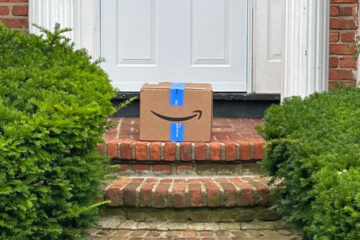Over the past few years, Amazon Prime, which currently costs $14.99 a month, has seen rapid growth in U.S. subscribers.
The subscription service, which offers Amazon (AMZN) customers access to exclusive benefits such as free shipping, one-day delivery, Prime Day discounts, and a free Grubhub+ membership, reached roughly 180.1 million U.S. subscribers last year, which is about 44% higher than number of U.S. subscribers it had in 2017, according to data from Statista.
💵💰Don’t miss the move: Subscribe to TheStreet’s free daily newsletter 💰💵
Amazon Prime is projected to reach 185 million U.S. subscribers this year as the service continues to see increased momentum from consumers.
Related: Amazon faces another major boycott threat from consumers
In Amazon’s first-quarter earnings report for 2025, it revealed that it generated $11.7 billion in revenue from its subscription services (including income earned from Amazon Prime membership fees), which is almost 2% higher than what it earned during the same quarter last year.
Amazon Prime delivery bags outside an apartment door.
Image source: Lindsey Nicholson/UCG/Universal Images Group via Getty Images
Amazon makes a controversial move
As Amazon Prime becomes more popular, its Prime Video service has quietly undergone a controversial change that will help increase the retail giant’s revenue, and customers may not like it.
Amazon Prime Video ads have gradually been elongated to last four to six minutes per hour, according to a new report from Adweek. When ads were first introduced to the platform last year, they only lasted two to three-and-a-half minutes per hour.
Amazon recently confirmed this change to ad buyers, who are curious about how this will impact the platform’s performance.
Related: Paramount makes drastic decision amid shift in customer behavior
“They told us the ad load would be increasing,” said Kendra Tang, a programmatic supervisor at Rain the Growth Agency, while speaking to Adweek. “That’s been confirmed recently when we noticed more avails in the system.”
When Amazon Prime introduced ads to its platform in January last year, it claimed in an email to customers that it aims “to have meaningfully fewer ads than linear TV and other streaming TV providers,” so this change comes as a surprise.
In a statement to TheStreet, an Amazon spokesperson said the company is focused on improving the customer experience on Prime Video.
“We remain focused on prioritizing ad innovation over volume,” said the Amazon spokesperson. “While demand continues to grow, our commitment is to improving ad experiences rather than simply increasing the number of ads shown.”
Amazon Prime customers are frustrated with ads
The recent news of longer ads on Prime Video is making some customers reconsider their subscriptions.
“My Prime account is up for renewal in August. I will definitely be cancelling. Not only are the ads numerous, they are sometimes double in volume (loudness). I can’t always hit the mute button fast enough,” wrote one Amazon Prime user on Reddit.
“Perfect, I was really hoping to finally cut myself off Prime Video, and this should do it,” wrote another Amazon user on Reddit.
More Retail:
Costco quietly plans to offer a convenient service for customersT-Mobile pulls the plug on generous offer, angering customersKellogg sounds alarm on unexpected shift in customer behavior
This doesn’t come as a surprise, as Prime Video users have previously made it loud and clear on social media that they are not fans of ads on the platform, despite having the option to remove them for an extra $2.99 a month.
Shortly after Amazon began rolling out ads on Prime Video, it was hit with a class-action lawsuit from a frustrated customer. The lawsuit accused Amazon of being “deceptive” and “unfair,” violating state consumer protection laws, as it had advertised Prime Video as “commercial-free” for years.
“To stream movies and tv shows without ads, Amazon customers must now pay an additional $2.99 per month,” reads the lawsuit. “This is true even for people who purchased the yearly, ad-free subscription, and who are now mid-way through their subscription. This is not fair, because these subscribers already paid for the ad-free version; these subscribers should not have to pay an additional $2.99/month for something that they already paid for.”
Related: Best Buy CEO raises red flag about startling customer behavior


